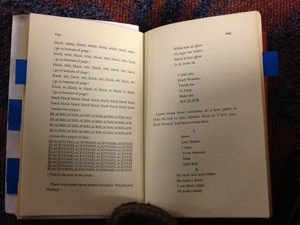Comments I delivered for a panel on Amiri Baraka’s essays at the 2015 MLA Annual Convention in Vancouver. The panel was organized by the Divisions on Non-Fiction Prose Studies and Black American Literature and Culture. Margo Natalie Crawford, Jeremy M. Glick, William J. Harris, and Aldon Lynn Nielsen also spoke on the panel, Brian J. Norman and Dana A. Williams presiding.
1.
When we talk about the Black Arts Movement—or, for that matter, most movements—how can we do so? By that I mean, how can we address not only the flux of movement, but also the diversity of thought and action shaped by regional conditions and philosophical differences? How can we take stock of the activity of movement broadly but also specifically—what it looked like on the ground? And in the case of the Black Arts Movement’s most emblematic figure, Amiri Baraka, whom we honor here, how shall we assess the volume and diversity of his movement work and his contributions to the development of art, culture, politics, and consciousness?

In order to think about these questions, I want to turn to the spring of 1967 and to a unique document of that moment, Baraka’s “Communications Project”, published in 1968 in the “Black Revolutionary Theatre” special issue of The Drama Review.[1] Ed Bullins served as guest editor; the issue contains primarily plays, by Bullins, Sonia Sanchez, Marvin X, Jimmy Garrett, Baraka and others. Of the few critical pieces, Larry Neal’s seminal essay “The Black Arts Movement” is probably the issue’s most widely circulated piece, and alongside other essays by Neal, Addison Gayle, Carolyn Rodgers, Baraka, among others, it is certainly one of the most emblematic pieces of Black Arts criticism.

